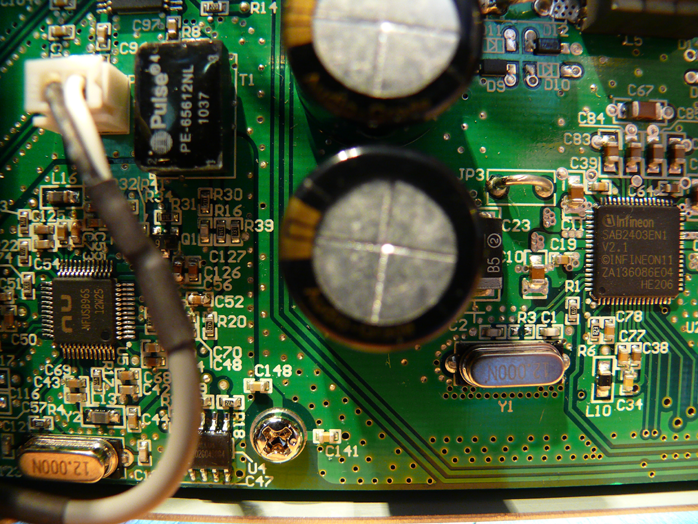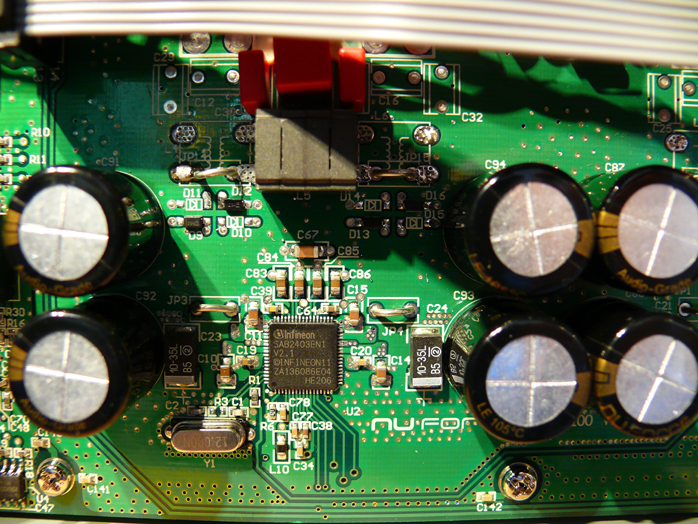This review page is supported in part by the sponsors whose ad banners are displayed below |
 |
 |
With its switch-mode power supply right behind the nicely stepped no-stop volume control encoder, the DDA-100's line voltage is automatically universal. That's different from the DAC-100 whose linear supply first requires that you properly set its 115/230 switch next to the power IEC. The SMPS of the DDA-100 is encased inside a thick two-part steel shield with an open seam.
|
 |
The foam spacer on top reinforces the bent slip cover which secures from beneath with three screws per side.
|
 |
|
|
|
The two power ICs which enable the direct-digital scheme in the first place are from Germany's Infineon in Munich and their SAB2403ENT V2.1 chips. Says the company, "...these are high-performance energy-efficient digital and analog input high dynamic range open-loop class-D speaker amplifiers. Phase-neutral 512TAP FIR digital filter & signal processing features are included for optimizing sound. The digital input interfacing S/PDIF for long wires, optical as well as the I²S chip-to-chip interface take the incoming PCM audio data up to 192kHz via a jitter-removing self-adopting variable sample rate converter to the 24-bit digital audio processing chain. After the sound and volume control stage the monolithic integrated output power stages work with supply voltages from 10V to 28V and with dynamic peak currents up to 8A per channel."
|
 |
The USB receiver is a NuForce-branded chip identified as
NFUSB96S 12W25 to signal 96kHz limits which renders drivers unnecessary. There's also an Asahi Kasei Microsystems AK4113VF, a pulse transformer, two 12.000N clocks and a big NuForce-branded 6000uF/80V coupling cap.
|
 |
The credit-card remote—the same one is included with the DAC-100—has on, off, mute, input and volume up/down buttons. Inputs switch sequentially from C.1 (coaxial) through U.2 (USB), 0.3 and 0.4 (both Toslink).
|
 |
|
|
|
|
As mentioned already, the DAC-100 and DDA-100 can't play together as the former lacks digital outputs, the latter analog inputs. That's why the 100 Series next gets its own dedicated STA-100 power amplifier. You actually could use the DDA-100's Toslink output to feed the equivalent input on the DA-100 and add $1.095 headphone functionality. It's a quite unlikely scenario however. |
 |
 |
  |
 |